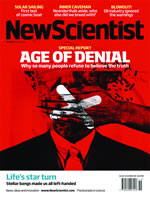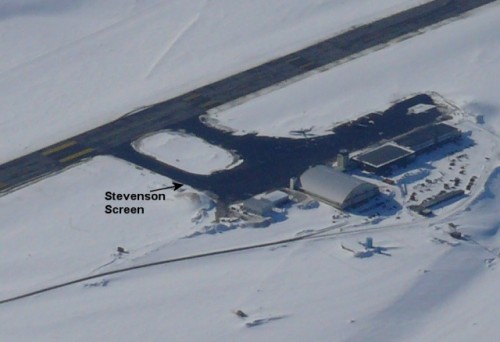Bishop Hill Blog writes, concerning the truncation of recently divergent data by Keith Briffa and others:
The point at issue is Mike’s Nature Trick and the question of whether it amounts to scientific fraud. Der Spiegel describe the trick as follows:
But what appeared at first glance to be fraud [“hide the decline”] was actually merely a face-saving fudge: Tree-ring data indicates no global warming since the mid-20th century, and therefore contradicts the temperature measurements. The clearly erroneous tree data was thus corrected by the so-called “trick” with the temperature graphs.
Many of Roger’s readers take issue with the description of the divergent data as “erroneous” and I tend to agree with them here. The data has been processed in the same way in the twentieth century as in earlier periods, so it is not erroneous, but anomalous. The reason for the divergence is unknown and the divergence therefore needs to be disclosed and discussed since it potentially undermines all tree-ring based temperature reconstructions.
Here is an example of data you might reasonably throw out as erroneous: Drop a ball a thousand times from a building and measure its acceleration. We know its going to be something like 9.8 m/sec/sec. If four or five times we measure it as 5 m/sec/sec, we will likely treat those measurements as erroneous, since we have hundreds of years of historical measurements to confirm the acceleration near the Earth’s surface due to gravity.
Here is another example: You have ten identical compasses. Nine of them say north is in the direction of the tree in your backyard. The tenth say it is behind you. We might reasonably throw out the tenth observation as erroneous.
Here is a different kind of example. From 1936 to 2000, the winner of the last Washington Redskins home game accurately predicted the winner of that year’s presidential election. Then, in 2004 the relationship between Redskin’s performance and the presidential election did not hold. So, should we throw out the data point as anomalous, or should we use this data point to force ourselves to reconsider whether the relationship was ever really a valid causality?
The Mann/Briffa/etc. tree ring analyses assume the following: That tree ring growth varies linearly with average temperatures; that the temperature-growth relationship is far stronger and more dominant than relations between soil conditions, rain, sunlight, or any other environmental factor and tree growth; and that this relationship remains fairly constant over the life of a tree.
The question is, do we believe these assumptions in the same way that we believe that the acceleration of gravity is 9.8 m/sec/sec? By throwing out the data after a certain date, which by the way was gathered from the exact same trees by the exact same methodology as the earlier data, Briffa and others are in effect saying that their assumptions about the relationship between tree ring growth and temperature are unassailable, despite the fact that these analyses have only really been done for a few years.
Reasonable people instead will tend to conclude that it is instead very possible that the divergence problem the author’s sought to hide is in fact evidence that tree rings make poor thermometers – than one or all of the assumptions about tree rings and their relationship with temperature are flawed.


